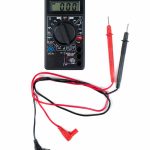In the world of motorcycling, maintaining your bike’s clutch system remains a top priority. The clutch plays a pivotal role in controlling the transfer of power from the engine to your bike’s transmission. One of the key aspects of maintaining this system is bleeding the clutch, particularly on a Suzuki Bandit 1250. This guide will take you through this procedure in detail, ensuring you can keep your machine in top condition.
Understanding the Clutch System on Your Bike
Before we dive into the bleeding procedure, you need to understand the components of the clutch system. Often, the clutch on a Suzuki Bandit 1250 features a hydraulic system, similar to the ones you would find in a car or truck. This system consists of several key components, including the clutch master cylinder, the clutch lever, the brake fluid, and the bleed valve.
Have you seen this : How do I perform a compression test on a Honda CBR600RR to check engine health?
The clutch master cylinder is a control device that converts non-hydraulic pressure (from your hand on the clutch lever) into hydraulic pressure to activate the clutch. When you pull on the clutch lever, it pushes against the master cylinder, forcing brake fluid down the clutch lines to the clutch slave cylinder.
The brake fluid is what enables this system to work so fluidly. Acting as a transferring medium, it carries the force from the master cylinder down to the clutch itself. Over time, the brake fluid may accumulate air bubbles, which can affect the performance of your clutch.
Topic to read : What are the steps for calibrating the suspension on a Ducati Hypermotard 939?
The Importance of Bleeding the Clutch System
As mentioned, air bubbles in the brake fluid are one of the main reasons why you might need to bleed your clutch system. Air in the lines can lead to a spongy or loose clutch lever, and it can affect the clutch’s engagement and disengagement. It might also result in difficulty shifting gears or, in severe cases, the clutch failing to disengage entirely.
Bleeding the clutch system will remove these trapped air bubbles, ensuring that your clutch operates as it should. This procedure typically involves forcing brake fluid through the system from the master cylinder to the bleed valve, thereby pushing the air out.
Preparation for Bleeding the Clutch System
Before you start with the bleeding procedure, make sure you have the necessary tools and supplies at hand. You will need a new bottle of brake fluid (check your bike’s manual for the correct type), a wrench or socket that fits the bleed valve, a clear tube to fit over the bleed valve, and a container to catch the old fluid.
It’s also highly advisable to protect your bike’s paint and finish from any spilled brake fluid, as it can be highly corrosive. A simple sheet of plastic or a drop cloth can work well.
How to Bleed the Clutch System on a Suzuki Bandit 1250
Finally, we come to the actual bleeding procedure.
-
Locate the Bleed Valve: The first step is to locate the clutch bleed valve. This is typically situated on the clutch slave cylinder, which is found near the front of your bike.
-
Connect the Tube and Container: Attach one end of the clear tube to the bleed valve, and place the other end in your container. Ensure the tube is securely attached and the container is stable to prevent any spillages.
-
Open the Master Cylinder: Open the top of the master cylinder and fill it with new brake fluid.
-
Pump the Clutch Lever: Pump the clutch lever a few times. This will build up pressure in the system.
-
Open the Bleed Valve: Using the wrench or socket, gradually open the bleed valve. You should see fluid (and possibly air bubbles) flow through the tube and into the container.
-
Close the Bleed Valve: Close the bleed valve before you release the clutch lever, to prevent air from being drawn back into the system.
-
Repeat the Process: Repeat this process – pump the lever, open the valve, close the valve, release the lever – until you no longer see air bubbles coming out with the fluid.
-
Top Up the Fluid: Keep an eye on the brake fluid level in the master cylinder and top it up as necessary throughout this process.
-
Check the Clutch Lever Feel: Finally, once you are confident that all the air has been removed, tighten the bleed valve, remove the tube, and replace the master cylinder cap. Test the clutch lever – it should now feel firm and responsive.
Post-Bleed Procedure and Reaction
Once you’ve completed the bleed procedure, you should notice a significant improvement in your clutch’s performance. The lever should feel firm and actuate smoothly, and shifting through the gears should be more precise.
Remember, bleeding the clutch system on your Suzuki Bandit 1250 is a critical aspect of bike maintenance. Regularly undertaking this process can not only improve your motorcycle’s performance but also extend the life of its components.
You’ve joined the ranks of dedicated bike owners who understand the importance of regular maintenance and how it impacts their ride. The ABS system, brakes, clutch, and every other part that contributes to your bike’s performance are now under your expert care.
So, next time you notice that spongy feel in your clutch lever, you’ll know exactly what to do. With this guide, you’re well equipped to bleed the clutch system and keep your Suzuki Bandit 1250 running smoothly for many miles to come.
Troubleshooting After Bleeding the Clutch System
While bleeding the clutch system on your Suzuki Bandit 1250 is generally a straightforward process, you may encounter a few hitches along the way. These may include the clutch lever still feeling spongy after bleeding, or the clutch failing to disengage.
Master cylinder problems are often the culprits behind such issues. For example, if the master cylinder’s seals are worn out or damaged, they may allow air to re-enter the system after bleeding. Alternatively, the master cylinder may not be generating enough pressure to effectively bleed the system.
If you’re still experiencing issues after bleeding your clutch system, a comprehensive inspection of the master cylinder is in order. Ensure the seals are in good condition and that the cylinder is generating enough pressure.
Brake fluid can also be a culprit. The wrong type of brake fluid or contaminated fluid could lead to performance issues. Always use the type of brake fluid recommended in your bike’s manual, and ensure it’s from an unopened, sealed container.
Conclusion: Maintenance is Key to Enjoying Your Ride
Maintaining your Suzuki Bandit 1250 is essential for enjoying your rides and ensuring the longevity of your bike. Bleeding your clutch system is a simple but effective measure to maintain optimal performance and ensure smooth gear shifting.
But it’s not just about the clutch – regular maintenance should extend to all your bike’s key systems. Whether it’s checking the wear and tear on your front brakes, ensuring your rear brake is functioning properly, or keeping an eye on your ABS module, every component plays a crucial role in your bike’s overall performance.
Moreover, consider joining a community of other Suzuki Bandits enthusiasts. Members often share valuable tips and tricks, such as the best way to locate the bleed valve (score location) or how to measure the effectiveness of your maintenance (reaction score). Being a part of such a group can enhance your maintenance skills and deepen your understanding of your Bandit 1250.
Whether you joined the ranks of Suzuki Bandits owners in Aug or Jan, whether you are a novice at bike maintenance or an experienced supporter, remember that the key to enjoying your ride lies in regular maintenance and a willingness to learn.
So, the next time you take your Suzuki Bandit 1250 for a spin, remember the role of regular maintenance. From removing those pesky air bubbles from your clutch system to ensuring your front and rear brakes are in tip-top shape, every little bit counts. As they say, prevention is better than cure, and with a bike as fine as the Suzuki Bandit 1250, you’ll want to keep it running smoothly for many years to come.











